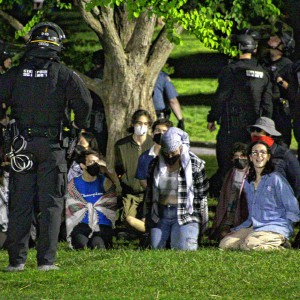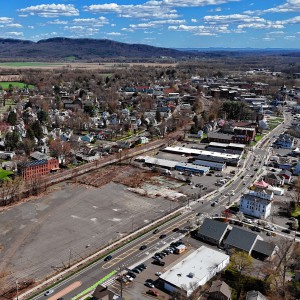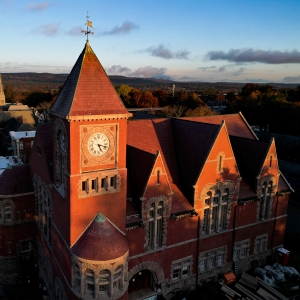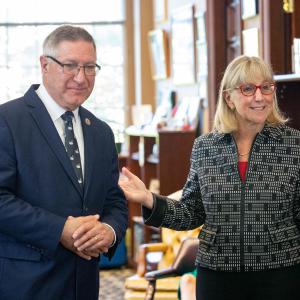Hampshire County hosting just 26 of the 7,000 families in emergency housing

Eleven families are staying in Hadley s part of the state’s emergency shelter system. South Hadley is hosting 10 families and Amherst is hosting five.
| Published: 12-20-2023 3:58 PM |
Hampshire County is currently home to just 26 of the 7,000 or so families in the state’s emergency shelter system, with 11 families in Hadley, 10 in South Hadley and five in Amherst, according to statistics released this week by the Healey administration as part of an update that revealed that costs were expected to approach $1 billion annually this fiscal year and next fiscal year.
While Hampshire County only has a small number of the total families, both Franklin County and Hampden County, are housing much larger numbers, with 58 families in Greenfield alone, 177 in Holyoke, 282 in Springfield and 123 in Chicopee.
The information comes from a new report issued by the Healey administration, which plans to drain a $700 million state escrow account to cover a portion of the unanticipated expenses related to these families.
The Legislature and Gov. Maura Healey in July appropriated just $325 million for emergency shelters in the fiscal 2024 budget, an amount that is not coming close to the funding needed to house homeless families from Massachusetts and new arrivals from other countries.
The new report offers the fullest look to date at the costs of a crisis that caused Healey to declare a state of emergency in August. The surging costs are rolling in just as state tax revenue growth is slowing and creating budgeting storm clouds.
Beacon Hill Democrats are just coming off a heated debate over steering $250 million more into the shelter system, and the new report suggests that more than $350 million in additional funds may need to be authorized to keep the system funded through June and to “avoid imminent run-out dates for key programs.”
Former Gov. Charlie Baker created a “transitional escrow fund” in October 2021, when he signed a supplemental budget that stashed $1.5 billion in surplus revenue into the fund. Lawmakers this year sought to draw $205 million from the fund to cover fiscal 2024 spending increases, but Healy vetoed the maneuver.
Administration and Finance Secretary Matthew Gorzkowicz and Housing Secretary Ed Augustus, who authored the report, wrote that most families are living in shelters for over a year, so the state will need to take a two-year approach to funding the system.
Article continues after...
Yesterday's Most Read Articles
 More than 130 arrested at pro-Palestinian protest at UMass
More than 130 arrested at pro-Palestinian protest at UMass
 Public gets a look at progress on Northampton Resilience Hub
Public gets a look at progress on Northampton Resilience Hub
 Northampton bans auto dealerships near downtown; zone change won’t affect Volvo operation on King Street
Northampton bans auto dealerships near downtown; zone change won’t affect Volvo operation on King Street
 UMass basketball: Bryant forward Daniel Rivera to be Minutemen’s first transfer of the offseason
UMass basketball: Bryant forward Daniel Rivera to be Minutemen’s first transfer of the offseason
 Town manager’s plan shorts Amherst Regional Schools’ budget
Town manager’s plan shorts Amherst Regional Schools’ budget
 Police respond to alcohol-fueled incidents in Amherst
Police respond to alcohol-fueled incidents in Amherst
“That means that even with the system’s capacity level established, deficiency needs for EA are a two fiscal year problem, requiring a solution that spans FY24 and FY25,” they wrote. “Fundamentally, the crisis of family homelessness requires a multi-faceted set of policies including shelter, supportive services, education and workforce training, and affordable housing programs that enable families to leave shelter and ultimately move on to stable housing.”
The policies that the Cabinet secretaries referred to could come into focus next month when Healey offers her fiscal 2025 budget plan.
Gorzkowicz and Augustus said that the administration’s short-term plan, which will be reflected in an upcoming supplemental budget bill, would tap the $700 million remaining in the Transitional Escrow Fund to cover funding deficiencies associated with $932 million in projected emergency shelter spending in fiscal 2024, and a projected $915 million in fiscal 2025 emergency shelter expenses.
Packed shelters and hotels have become associated with what is often called the “migrant crisis,” and while new arrivals seeking asylum and fleeing humanitarian crises in other countries have fueled the increase in those seeking shelter, the report shows new immigrants make up less than half of the number of people in the system.
As of Dec. 12, 3,516 families in EA entered as migrants, refugees or asylum seekers. There were a total of 7,531 families enrolled in the system on that day, according to News Service tracking of Executive Office of Housing and Livable Communities data.
In order to get a spot in shelter, families need to have entered the country legally under federal immigration laws. Most of the immigrants are coming into Massachusetts from Central and South America and have either applied for asylum, been granted temporary protected status or are otherwise lawfully present.
Healey has repeatedly said her administration is focused on getting work authorizations for these individuals, to help migrants who are eager to earn money to leave shelter and support their families financially.
Despite a state right-to-shelter law, Healey unilaterally capped the shelter system at 7,500 families this fall. A waitlist of those standing by has grown to over 200 families.
The administration plans to file a supplemental budget “in the coming weeks” to create an “Emergency Housing and Community Trust Fund” to address EA funding deficiencies, the report says.
The huge amount of estimated spending comes at a time when revenue flowing into state coffers is slowing down, and lawmakers and Healey may have to consider what that means for fiscal 2025 spending.
“Revenues are not what they have been the last few years. We recognize that. We’ve seen a dip,” Healey said last week.
Boston is hosting the most families, with 1,308 families living in shelters in the city. Worcester has the next highest number of sheltered families, 303, followed by Springfield at 282 and Lynn at 280.
The report, shared with the News Service on Monday night, was the first of many. Healey’s administration will have to deliver a similar update to lawmakers every two weeks, which will include information on current shelter numbers and spending.

 Valley lawmakers seek shorter license for FirstLight hydropower projects
Valley lawmakers seek shorter license for FirstLight hydropower projects State Senate budget funds free community college for all
State Senate budget funds free community college for all ‘We can just be who we are’: Thousands show support for LGBTQ community at Hampshire Pride
‘We can just be who we are’: Thousands show support for LGBTQ community at Hampshire Pride Doors open at Tilton Library’s temporary home at South Deerfield Congregational Church
Doors open at Tilton Library’s temporary home at South Deerfield Congregational Church
